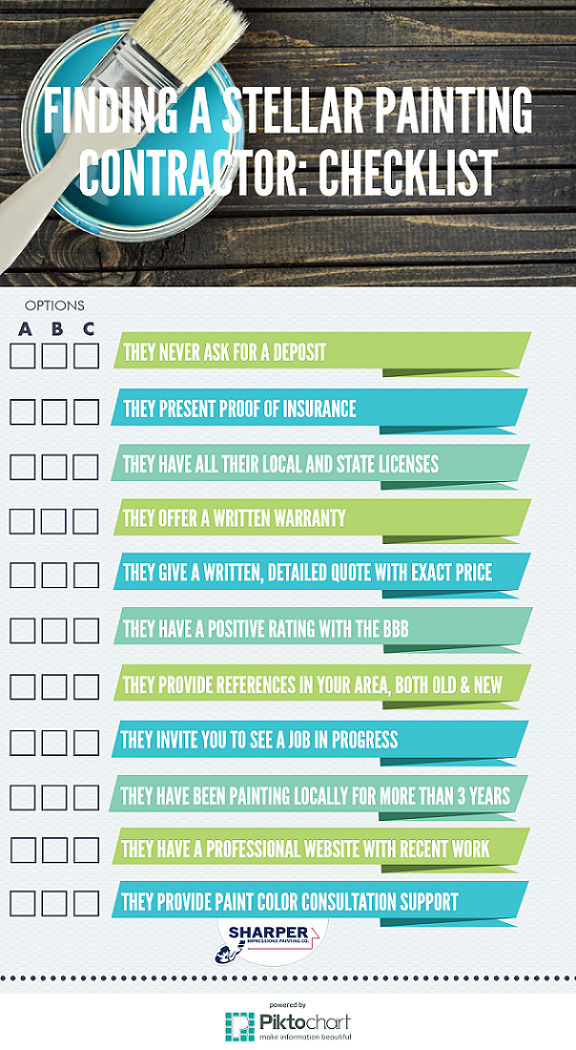Prepared Your Wall Surfaces For Paint With Important Ideas And Strategies That Ensure A Smooth Surface-- Explore The Essential Actions To Boost Your Task
Prepared Your Wall Surfaces For Paint With Important Ideas And Strategies That Ensure A Smooth Surface-- Explore The Essential Actions To Boost Your Task
Blog Article
Write-Up By-Soelberg Balslev
When you're prepping your wall surfaces for paint, it's essential to follow a systematic process to guarantee a remarkable finish. Beginning by analyzing the wall surface for any type of damages; this step can make or damage your job. Once you have actually recognized any type of issues, cleaning the surface area properly is necessary, as a filthy wall can impact paint adhesion. Afterwards, you'll require to spot any imperfections and use a guide. Yet there specify methods and pointers that can raise your prep work game-- allow's discover those further to attain the very best results.
Assessing Wall Surface Condition
Before you get your paintbrush, take a moment to evaluate your wall surfaces' condition. Check for any noticeable damage like splits, openings, or peeling off paint. These flaws can influence how the paint sticks and looks as soon as it's completely dry. If you see any type of significant damages, you'll need to prioritize repair services before diving into painting.
Look carefully at the texture of your wall surfaces. Is the surface smooth, or exists appearance that might require special consideration? Smooth wall surfaces generally require less preparation, while textured surfaces may require more time to repaint uniformly.
Likewise, take into consideration the previous paint work. If the old paint is glossy, it mightn't allow brand-new paint to stick appropriately. You'll wish to know if your wall surfaces have been painted with oil-based or water-based paint, as this can impact your selection of primer or paint.
Finally, bear in mind of any type of dampness concerns. If you see signs of water damage or mold, address these issues quickly to avoid more problems.
Cleaning the Surface
As soon as you've analyzed the condition of your wall surfaces, the next action is cleaning up the surface area. Begin by gathering your supplies: a bucket, cozy water, a moderate detergent, a sponge or fabric, and a scrub brush for tougher spots.
Begin on top edge of the wall and work your means down. Mix the detergent with warm water in your pail, after that dip the sponge or cloth into the option. Wring it bent on stay clear of excessive wetness on the walls.
As you cleanse, pay very close attention to locations that might've accumulated dust, grease, or fingerprints. For persistent spots, make use of the scrub brush gently to stay clear of damaging the paint beneath. Wash your sponge or cloth often in clean water to avoid spreading out dirt around.
After cleaning, it's necessary to wipe the wall surfaces with a wet towel to get rid of any type of soap residue. https://www.thesun.co.uk/fabulous/22041997/interior-designer-common-painting-mistake-home/ makes sure a smooth surface area for the brand-new paint to abide by.
Enable the walls to completely dry entirely before proceeding to the next prep work steps. arrowhead paint will certainly help create a fresh canvas for your paint task, making certain the very best outcomes.
Patching and Priming
Patching and priming are critical steps in preparing your walls for a fresh layer of paint. First, examine your wall surfaces for any kind of openings, cracks, or flaws. Utilize a premium spackling substance or patching paste to fill up these areas.
Apply the compound with a putty blade, smoothing it out so it's flush with the surrounding surface area. Permit it to dry entirely, and then sand it gently until it's smooth and also.
As soon as you've patched whatever, it's time to prime. Primer aids secure the patched areas, making sure the paint adheres effectively and gives an uniform finish. Pick a guide appropriate for your wall type and the paint you'll be utilizing.
Use the guide utilizing a roller for larger locations and a brush for corners and edges. If your patched areas are considerably huge or permeable, you might intend to apply a second layer of guide after the first one dries.
After priming, let everything completely dry completely before going on to painting. This preparation won't just boost the appearance of your wall surfaces however also prolong the life of your paint task.
Take your time, and you'll be pleased with the results.
Final thought
By adhering to these basic actions, you can achieve a smooth and specialist finish on your walls. Begin by analyzing their problem, after that tidy and spot any kind of blemishes prior to using guide. Keep in mind to permit adequate drying out time and make certain whatever is smooth before you dive into painting. With the right preparation, you'll set the stage for a stunning improvement in your area. Currently, collect your products, inhale the fresh air, and prepare yourself to repaint!
